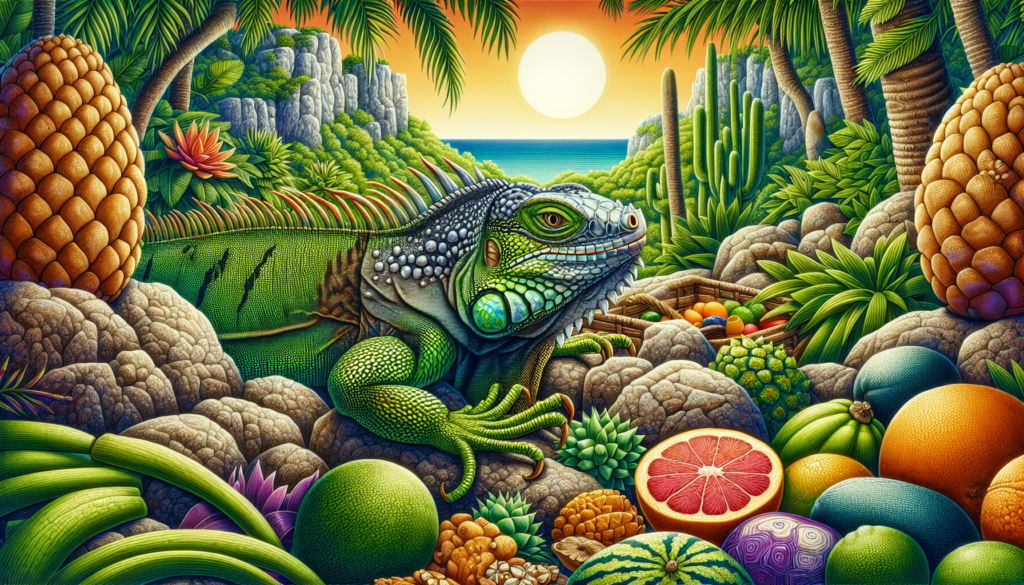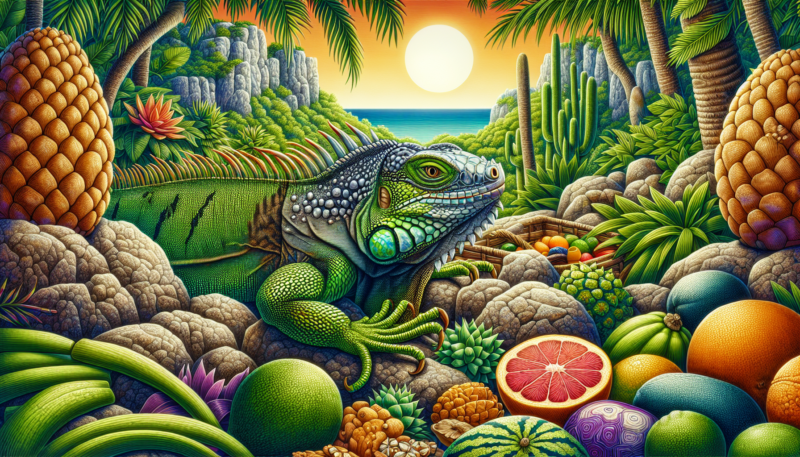Are you ready to embark on an exciting journey into the enchanting realm of Mexican Green Iguanas? These incredible reptiles, with vibrant hues of green and captivating mannerisms, are sure to captivate your imagination. From their impressive size to their unique adaptations, this article will unveil the wonders of the Mexican Green Iguana, revealing a world that is both fascinating and awe-inspiring. Get ready to uncover the secrets of these majestic creatures as we delve into their amazing world.
Habitat
The Mexican Green Iguanas are native to the tropical forests of Mexico and Central America. They can be found in a wide range of habitats, including rainforests, highland cloud forests, and even semi-arid regions. These iguanas prefer areas with plenty of vegetation, such as trees and bushes, which provide them with both food and shelter. They are skilled climbers and can often be found basking in the sun on tree branches or rocks.
Physical Characteristics
Mexican Green Iguanas are one of the largest species of iguanas, with adults reaching an average length of 4 to 6 feet, from snout to tail. They have a slender and elongated body, with a long tail that makes up two-thirds of their total length. Their scales are rough and bumpy, providing them with excellent protection from predators. These iguanas have a vibrant green coloration, which helps them blend into their forest surroundings. However, young iguanas may have brighter colors, including shades of blue and yellow, which gradually fade as they mature.

Lifecycle
Mexican Green Iguanas reproduce through sexual reproduction, with females laying eggs that are then incubated and hatched. The mating season usually takes place during the rainy season, when the iguanas are most active. Female iguanas dig deep nests in sandy soil or loamy earth, where they can lay up to 50 eggs at a time. After laying the eggs, the female covers them up and leaves them to incubate. The incubation period typically lasts around 90 days, after which the hatchlings emerge.
Diet and Feeding Habits
Mexican Green Iguanas are mainly herbivorous, feeding on a variety of plant matter. Their diet consists of leaves, flowers, fruits, and even the bark of trees. They have strong jaws and sharp teeth that allow them to tear apart tough vegetation. These iguanas are known to be selective eaters, preferring certain plants over others. They have been observed feeding on plants such as hibiscus, figs, and even cactus pads. The high fiber content in their diet helps with digestion and provides them with the necessary nutrients for growth and energy.

Communication and Behavior
Mexican Green Iguanas are known for their vocalizations, which they use to communicate with each other. They make various sounds, including hissing, barking, and chirping. These vocalizations serve different purposes, such as warning other iguanas of potential threats or attracting mates during the breeding season. In terms of behavior, these iguanas are usually solitary but can sometimes be found in small groups, especially during mating season or when resources are abundant. They are primarily diurnal, being most active during the day, and spend their nights sleeping in tree branches or other elevated perches.
Natural Predators
The Mexican Green Iguanas have a few natural predators in their habitat. Birds of prey, such as hawks and eagles, are known to prey on these iguanas, especially the young and vulnerable ones. Mammals, such as raccoons and large snakes, are also potential predators, as they are skilled climbers and can easily reach the iguanas in trees or bushes. However, the rough and bumpy scales of the Mexican Green Iguanas help protect them from some predators by making it difficult for them to grab onto the iguanas’ slippery bodies.
Conservation Status
Mexican Green Iguanas face various threats to their population, leading to a declining population in some areas. Habitat loss and degradation due to deforestation are major factors affecting their survival. The illegal pet trade is also a significant threat to their population, as these iguanas are highly valued for their beautiful coloration. In response to these threats, conservation efforts have been implemented to protect their habitats and discourage the illegal trade. National parks and protected areas have been established to ensure the preservation of their natural habitats.
Interaction with Humans
Mexican Green Iguanas are a popular choice as pets due to their colorful appearance and relatively calm nature. However, they require specific care and conditions to thrive in captivity, including a large enclosure with ample space for climbing and basking, a balanced diet, and proper lighting and heating. It is essential for potential owners to research and understand the specific needs of these iguanas before deciding to keep them as pets. In addition to their popularity as pets, Mexican Green Iguanas also hold cultural significance in some communities, where they are considered symbols of power and wisdom.
Interesting Facts
One of the most fascinating characteristics of Mexican Green Iguanas is their ability to regenerate lost body parts. If an iguana loses its tail or even a limb, it has the remarkable ability to grow it back over time. This regeneration process is called autotomy and is a unique adaptation that allows the iguanas to escape from predators or other dangers. Another interesting fact about these iguanas is their longevity. With proper care and a suitable environment, Mexican Green Iguanas can live up to 15 to 20 years in the wild and even longer in captivity.
Conclusion
The Mexican Green Iguanas are truly remarkable creatures that inhabit the tropical forests of Mexico and Central America. Their vibrant green coloration, impressive size, and unique behaviors make them a fascinating species to study and appreciate. However, they face various threats in their natural habitats, making their conservation essential. By understanding and valuing these incredible iguanas, we can contribute to their protection and ensure their survival for future generations to enjoy. So next time you encounter a Mexican Green Iguana, take a moment to appreciate its beauty and the important role it plays in its ecosystem.
